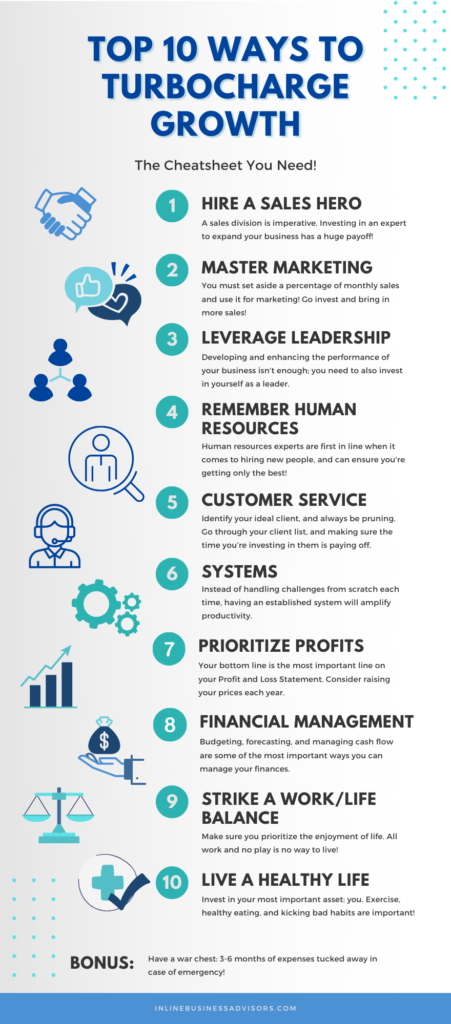In a market that’s continuously changing, small business owners have to make tough decisions to stay afloat, which includes the decision to raise business prices. The prospect of losing clients and disappointing them with a price hike is terrifying. Your first instinct may be to avoid it at all costs. After all, the last thing you want is to lose clients.
There are two schools of thought on raising prices: 1) You’re doing your job as a business owner if you keep raising prices because it’s part of the natural economic cycle, or 2) You’re greedy, price-gouging, and hurting people by charging more than they can afford to pay.
The truth is somewhere in between these two arguments. When you take a closer look at the market, it’s easy to see that raising prices is an essential part of running a successful business. As a small business owner, you need to understand that pricing strategies can only last for so long before you need to raise your prices or else lose revenue opportunities.
Why Do Businesses Need to Raise Their Prices?
In recent years, the cost of goods has been steadily increasing while wages have stagnated. This means consumers have less money in their pockets to spend on products or services. However, raising prices doesn’t just mean taking advantage of your clients. There are several reasons why this is important.
- The cost of doing business has gone up – it may be more expensive now to get supplies or labor. For example, gas and electricity costs have been steadily rising over the past few years, so you may be paying higher rates for those items as well.
- A changing market – the demand and supply of goods and services in your industry is another reason you may need to raise business prices. More demand means prices automatically go up, especially if the competition offers similar rates.
- Inflation – this is the biggest culprit of volatility in most markets, forcing businesses to increase prices even if they’ve been selling at the same prices for years.
- Change in taxes or other regulatory fees that apply specifically to an industry.
These are just some reasons why you might need to raise your prices. However, raising your prices might not be the cure-all for your business needs. In fact, it should be the last resort and part of a bigger business strategy that helps you cut costs and increase profitability.
If a price change is the only option, keep three things in mind:
- Raising your rates is actually good for your customers. The truth is that you can’t afford to continue offering great services and products if you can’t afford to keep your business open.
- Other business owners in your industry are likely charging what you need to charge because they have the same or similar overhead and budget.
- Customers need what you have to offer, and going out of business would deny them the opportunity to enjoy the product or service.
Understanding this will help you go to the next step in the process: approaching the price increase.

How to Implement the Price Increase
1. Calculate Your Cost of Goods Sold
Before you can determine how much you can charge for your services, you first need to do your math and identify the gaps. The cost of goods sold includes everything from the cost of your materials to the cost of your overhead. The company’s profit and loss statement can help you identify where the money goes.
A profit and loss statement, or P&L, is a summary of the revenue generated by your business and the expenses incurred to produce those revenues. It shows sales, costs of goods sold, gross profits, operating expenses, net income, or losses for a specific period. It also includes any other deductions like taxes and interest payments. If your expenses are greater than your revenue for an extended period, this could indicate that your business isn’t profitable enough, and it’s time to make some changes.
Note: You must understand what it’s costing you to understand what you’re charging.
2. Analyze the Numbers
Once you know your cost of goods sold per year, break it down to daily and hourly costs, and compare that with your products or services to figure out your price per hour. The goal here is to identify what you are actually making per product or service per unit of time. This process can help you identify areas you need to scale up or scale back to achieve your target profit.
Beyond the tax burden, health insurance needs, overhead costs, etc., consider upcoming expenses like computer replacement, time spent on marketing and promotion, and similar factors. This will provide a better picture to help you set a new price. It might even surprise you to learn that you don’t really need to significantly raise the price to turn a profit using the same model.
However, there’s still one more thing you need to do before setting the new price.
3. Reevaluate Your Target Market
Who is your target market? Are you already serving it? Do you need a new target market? These are some of the key questions you need to ask yourself before setting new prices.
If the people you serve can’t afford the actual price (what it costs you to create and distribute the product), they are not your actual target market. You need to find new ways to serve them or introduce a new product specifically for them.
If you’re confident about who you intend to serve, assess the actual damage your new prices will cause. How many of your customers will the new prices actually impact?
If you have been in the business for a while, your repeat customers should be a big consideration. Are you willing to lose them should prices be higher than they are willing to pay? Can you afford to lose them as you look for a new target market that can afford what you have to offer?
Ultimately, the question is simple: Are you willing to lose the wrong people to create the time and energy to find the right ones?

How to Raise Business Prices Without Losing Clients
In an ideal world, your clients desperately need your services, and they wouldn’t want to lose them. They would accommodate your price changes with no fuss, and you wouldn’t even have to worry about telling them.
However, life is not perfect, and clients also have expenses to consider. There’s no magic number that will please all customers who need your products or services no matter how hard you try. For that reason, be prepared to LOSE some clients based on your new prices.
That said, retaining your existing customer base is cheaper than trying to attract new ones. There are several strategies you can use to minimize the damage.
1. Communicate Price Changes
Preparing your marketplace for the new pricing structure should be the first thing on your to-do list. How you announce a price increase in your business can make or break the entire process. Be proactive and let the customers know why prices are changing and, if possible, how you got to the new prices. If you don’t control the narrative, your competition will control the messaging, which will cost you.
Don’t wait until after taxes or other special promotions occur before informing customers through direct mail or email campaigns. (Note: if price increases affect orders already placed by customers, it should be done promptly; those changes should not retroactively affect existing customer agreements.) Don’t leave anything up in the air or offer specific pricing information beyond general estimates without letting subscribers choose between multiple options (“yes”, “no”, etc.).
No matter how hard that may be, customers want to have the correct information to make educated decisions. Just as you can’t run your business effectively without a budget, neither can they decide without good details. Most consumers are on buyer forums where users share information about different products and services, prices, and performance.
Ultimately, the right customer who understands the value of your process and the end product will not budge. That will win you more customers than you lose. To avoid the worst hits, start looking for new customers who will value your price point, experiences, and process best in the meantime.
2. Repackage Your Offers
Additional value often sweetens the pill. Ensure you level up the anticipated value or general client experience from start to finish. Consider ways to increase the customer’s perceived value in what you’re selling to make them feel they’re getting a whole new product or service. When you raise business prices, you can help your client feel they are getting more value for their money.
Pro tip: Create a one-time service you can repeatedly provide without additional time strain on yourself. Think e-books, videos, training resources, etc. Alternatively, repackage what you’ve already created into something new you can charge more for.
3. Consider the Timing
This might be the trickiest part when you raise prices in your business. On the one hand, you probably want to increase your profitability immediately, and raising the prices will fast-track that. On the other hand, you want to prepare your customers, especially the regulars.
Keep the old prices indefinitely for this group if you really love them and are willing to lose a bit of money when you’re providing services or products to them. If necessary, you can also grandfather them and keep them in the old pricing structure. However, this is only recommended for high-integrity clients who won’t try to hoodwink you by acquiring services or products at that rate for their friends.
For other clients, the holidays are a good time to raise business prices. Most retailers actually do that because people are often too busy doing holiday shopping to look at the pricing too closely. If the parties involved signed contracts, including the new prices at the beginning of the new contract. You can also introduce new prices at stipulated times, like the beginning of each year, quarter, etc., for some businesses.
4. Create Limited Time Offers
This is an effective way of preparing customers for a coming price change without losing them. Let the customers know you will be selling your service or product at a given price by a certain date, but before then, they can still get it at the old price. This creates a sense of urgency that encourages prospective customers who may have been on the fence to try the service or products. It also encourages regulars to renew their subscription or buy additional products before the scheduled date.
5. Empower Your Sales Teams
In most businesses, sales professionals are responsible for communicating price changes to consumers. As a small business owner, you should ensure this team can handle this responsibility and tackle all ensuing matters satisfactorily. Work with the marketing department to help craft appropriate pitches and responses, particularly from your biggest clients.
Negative feedback is a major factor to consider. Customers will invariably complain about the new prices and may even make unfair comparisons. Ensure your team can competently handle this while holding its own throughout the process.
6. Track Price Changes
The main goal of setting a new price is increasing your company’s profitability to avoid sinking. However, it’s a delicate dance you must execute with utmost caution since you don’t know how the market will receive it.
Track customer feedback to capture what the market feels about your new prices. That, combined with the total sales revenue and the volume generated within a given period, should tell you how well your new prices are doing and give you insights on what to improve. Also, if you can, perform periodic price testing to remain informed on sustainable and optimized prices in your industry.
Final Thoughts on Price Increases
Setting new prices is inevitable at some point in your business, but that requires wisdom to execute. However, that it’s challenging and nuanced shouldn’t be a reason to put it off if you want to survive the entrepreneurship rollercoaster.
There’s more to business profitability than a price increase. This resource has more tips to help you run and manage a successful small business. Download it today for free!

Larry Vivola is a successful business coach who coaches entrepreneurs anywhere in the world via Zoom. If he’s not coaching he’s making meatballs and entertaining friends and family!
Free Advice Sucks! Invest in a one-time strategy session and pick Larry’s brain to help solve a pressing problem, discuss an idea, or brainstorm how to give your business performance a Turbo Boost!!! In the end your investment will yield you more money, time, and happiness!

